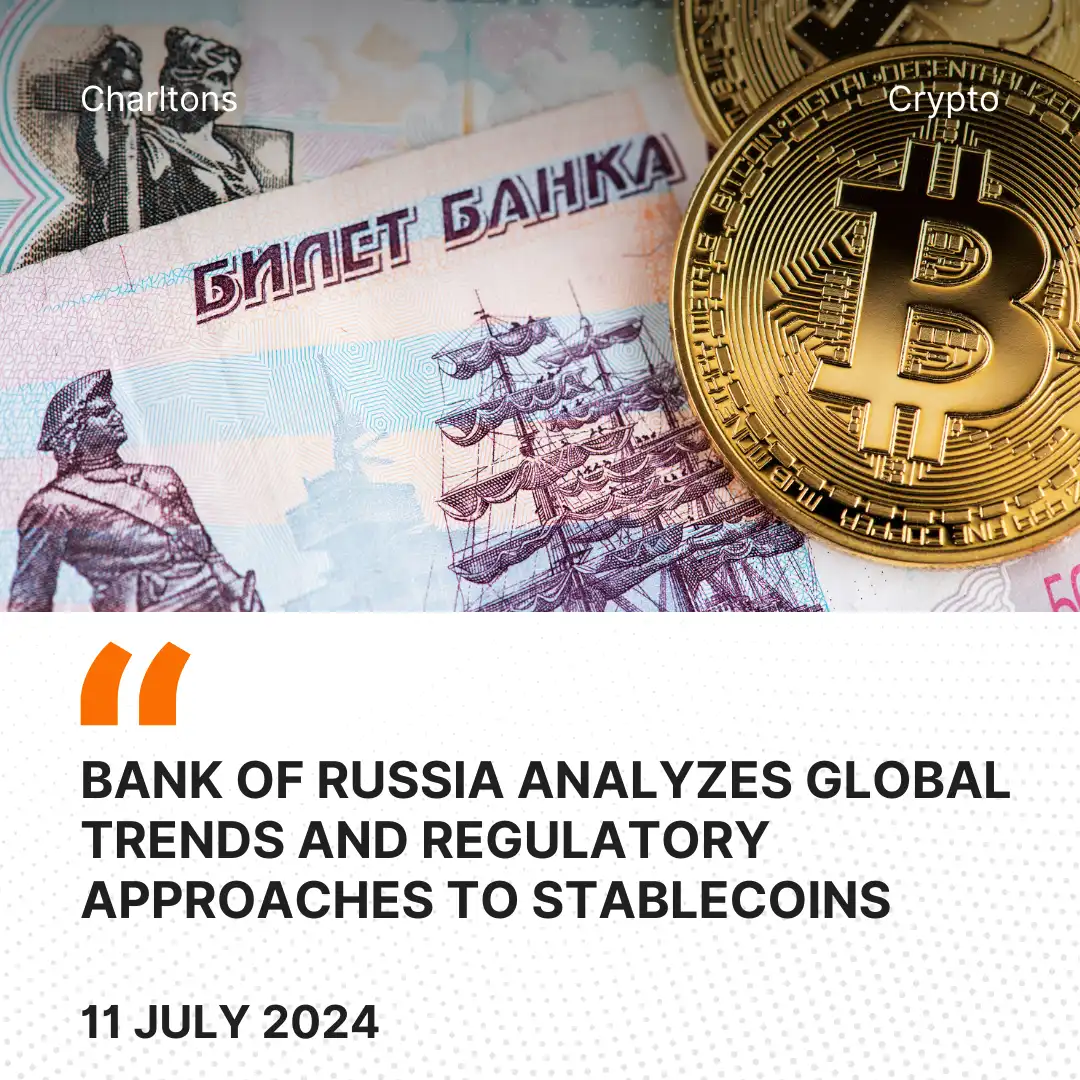
On 10 July, 2024, the Bank of Russia published an analytical report examining the economic and legal nature of stablecoins, alongside international trends and approaches to their regulation. This report comes as Russia and other countries deliberate on appropriate frameworks to manage these increasingly significant digital assets.
Stablecoins were initially created to address the excessive volatility of cryptocurrencies, offering a more stable payment facility within the crypto industry. Typically, stablecoins are pegged to fiat currencies, but they can also be linked to other assets such as gold, commodities, or even a basket of various assets. The report highlights that the diversity of stablecoin types allows them to share characteristics with various financial instruments, sometimes combining features of multiple asset classes.
Globally, the stance on stablecoins is still forming, with no universally accepted definition or regulatory approach. International organizations and national regulators are actively studying this phenomenon to balance its potential opportunities and risks. The current analysis by the Bank of Russia reveals that stablecoins are almost never recognized as legal tender, as they lack the universal applicability of national currencies. However, they are regarded as viable investment facilities and are increasingly used in cross-border payments.
The report points out that most countries adhere to the “same activity, same risks, same regulation” principle when developing regulatory frameworks for stablecoins. This can involve the creation of specific laws or the application of existing regulations. Given that the regulation of digital rights and digital currencies is actively developing in Russia, these frameworks might also be applied to stablecoins, though a comprehensive discussion is necessary.
The Bank of Russia’s report invites readers to provide feedback on the issues presented, emphasizing the need for inclusive dialogue to refine regulatory approaches.
The global structuring and algorithmic trends of stablecoins indicate a push towards more sophisticated and resilient designs. Algorithmic stablecoins, which use complex algorithms to manage their supply and maintain their peg, are gaining attention. These stablecoins adjust the supply based on market demand, aiming to stabilize their value without the need for traditional collateral. This innovative approach presents both opportunities and challenges, as it requires robust algorithmic controls and governance structures to ensure stability and trust.
As the regulatory landscape for stablecoins continues to evolve, the Bank of Russia’s proactive stance highlights the importance of adapting to international trends while safeguarding financial stability. The insights from this report will likely shape future regulatory measures, ensuring that stablecoins can be integrated into the financial system responsibly and effectively. This structured approach is crucial for fostering innovation while mitigating potential risks in the rapidly growing digital asset market. (Source: https://www.cbr.ru/eng/press/event/?id=18828#highlight=stablecoin)





